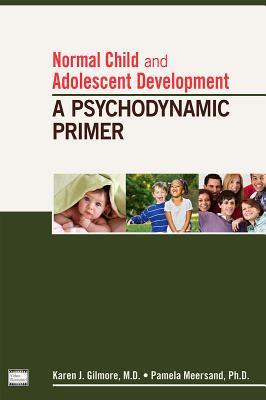Normal Child and Adolescent Development: A Psychodynamic Primer 2013
دانلود کتاب پزشکی رشد طبیعی کودک و نوجوان: آغازگر روان پویایی
| نویسنده |
Karen J. Gilmore, M.D., Pamela Meersand, Ph.D. |
|---|
| تعداد صفحهها |
364 |
|---|---|
| نوع فایل |
|
| حجم |
3 Mb |
| سال انتشار |
2013 |
89,000 تومان
رشد طبیعی کودکان و نوجوانان: یک پرایمر روان پویایی تصویر کاملی از رشد ذهنی را ارائه می دهد که بر اساس تحقیقات معاصر و تفکر روان پویایی ارائه می شود. دکتر گیلمور و دکتر مرساند رشد انسانی را به دستیاران روانپزشکی، دانشجویان دکتری روانشناسی و داوطلبان روانکاوی برای بیش از یک دهه آموزش دادهاند و نیاز اساسی به مواد در دسترس یافتهاند که یافتههای اخیر در ادبیات روانپویشی و تحقیقات روانشناسی را با هم ادغام کند. اطلاعات در مورد رشد به عنوان یک تعامل پویا ذهن رشد (از جمله ذهن ناخودآگاه)، بدن بالغ، و تقاضاهای در حال تکامل محیط. این کتاب پاسخ آنها به این نیاز است و به همان اندازه که آموزنده، قانع کننده و جامع است منحصر به فرد است.
مملو از ایدههای تازه و ارتباطات فوقالعاده، این جلد به زیبایی نوشته شده است و خواندن آن لذت بخش است. پوسترهای بالینی در متن روایات زنده ای هستند که کودک را در مراحل مختلف قابل تشخیص و به یاد ماندنی می کنند. علاوه بر این، تصاویر ویدئویی آنلاین ویژگیهای کلیدی را در هر مرحله از توسعه عادی تقویت میکنند. به طور خلاصه:
* نویسندگان با مقدمهای بر جهتگیری نظری کتاب شروع میکنند و با تکرار کوتاهی درباره اهمیت تفکر توسعه در عمل بالینی پایان میدهند و به وضوح دیدگاه نویسندگان را چارچوب میدهند. نویسندگان از ترسیم رشد آشنا استفاده میکنند که بر اساس تفکر فعلی، فصلهایی را در مورد نوزادی، کودکی، سن اولودمیک، تأخیر، پیشنوجوانی، اوایل و اواسط نوجوانی، اواخر نوجوانی و بزرگسالی هنوز بحثبرانگیز ارائه میکنند. یک کودک در سن ادیپ مستحق دو اصطلاح است، گواهی بر اعتقاد نویسندگان به ماهیت انتقادی این مرحله، که نشان دهنده یک گذار انتقادی در رشد ذهنی است. این کتاب تاکید می کند که هر مواجهه با بیمار مستلزم آشنایی با مفاهیم رشد و همچنین درک این است که گذشته و حال به طور جدایی ناپذیری با هم تنیده شده اند و آگاهی فعلی ترکیبی از همه تجربیات است.
رویکرد چند سیستمی کتاب پیچیدگی و تنوع توسعه انسانی را نشان می دهد. واقعاً رشد طبیعی کودک و نوجوان: آغازگر روانشناسی پویا متنی قرن بیست و یکمی است که هم دانشجویان و هم دست اندرکاران روانپزشکی، روانشناسی و روانکاوی به عنوان منبعی ارزشمند از آن استقبال می کنند.
Normal Child and Adolescent Development: A Psychodynamic Primer presents a complete picture of mental development, informed by contemporary research and psychodynamic thinking. Dr. Gilmore and Dr. Meersand have taught human development to psychiatric residents, psychology doctoral students, and psychoanalytic candidates for more than a decade, and found an acute need for accessible material integrating recent findings in the psychodynamic literature and psychology research with information on development as a dynamic interaction of the growing mind (including the unconscious mind), the maturing body, and the evolving demands of environment. The book is their response to this need, and it is as unique as it is useful, as compelling as it is comprehensive.
Replete with new ideas and fascinating connections, the volume is also beautifully written and a pleasure to read. The clinical vignettes in the text are vivid narratives that make the child at different stages recognizable and memorable. In addition, online video illustrations reinforce the key characteristics at each phase of normal development. In brief:
* The authors begin with an introduction to the book's theoretical orientation and end with a brief reprise of the importance of developmental thinking in clinical practice, forming a clear framework for the authors' perspective.* The authors use familiar developmental demarcations, informed by current thinking, to present chapters on infancy, toddlerhood, oedipal age, latency, preadolescence, early and mid-adolescence, late adolescence, and the still-controversial phase of emerging adulthood.* The section on the oedipal-age child merits two chapters, testament to the authors' belief in the critical nature of this phase, which marks a momentous transition in mental development.* Grounded in the belief that an understanding of development is a building block of clinical thinking, the book emphasizes that every patient encounter demands familiarity with developmental concepts, as well as the understanding that past and present are inextricably woven together, and that present consciousness is an amalgam of all experience.
The book's multisystem approach shows the complexity and diversity of human development. Truly, Normal Child and Adolescent Development: A Psychodynamic Primer is a twenty-first century text, and one that both students and practitioners in psychiatry, psychology, and psychoanalysis will welcome as a valuable resource.



